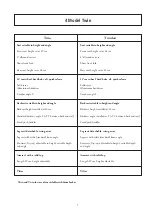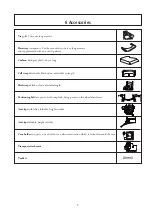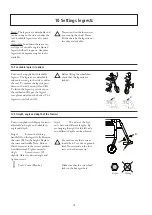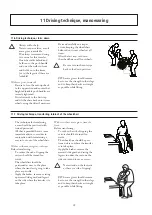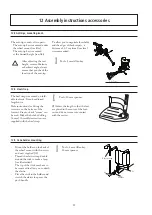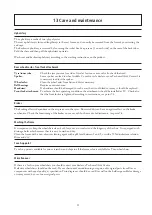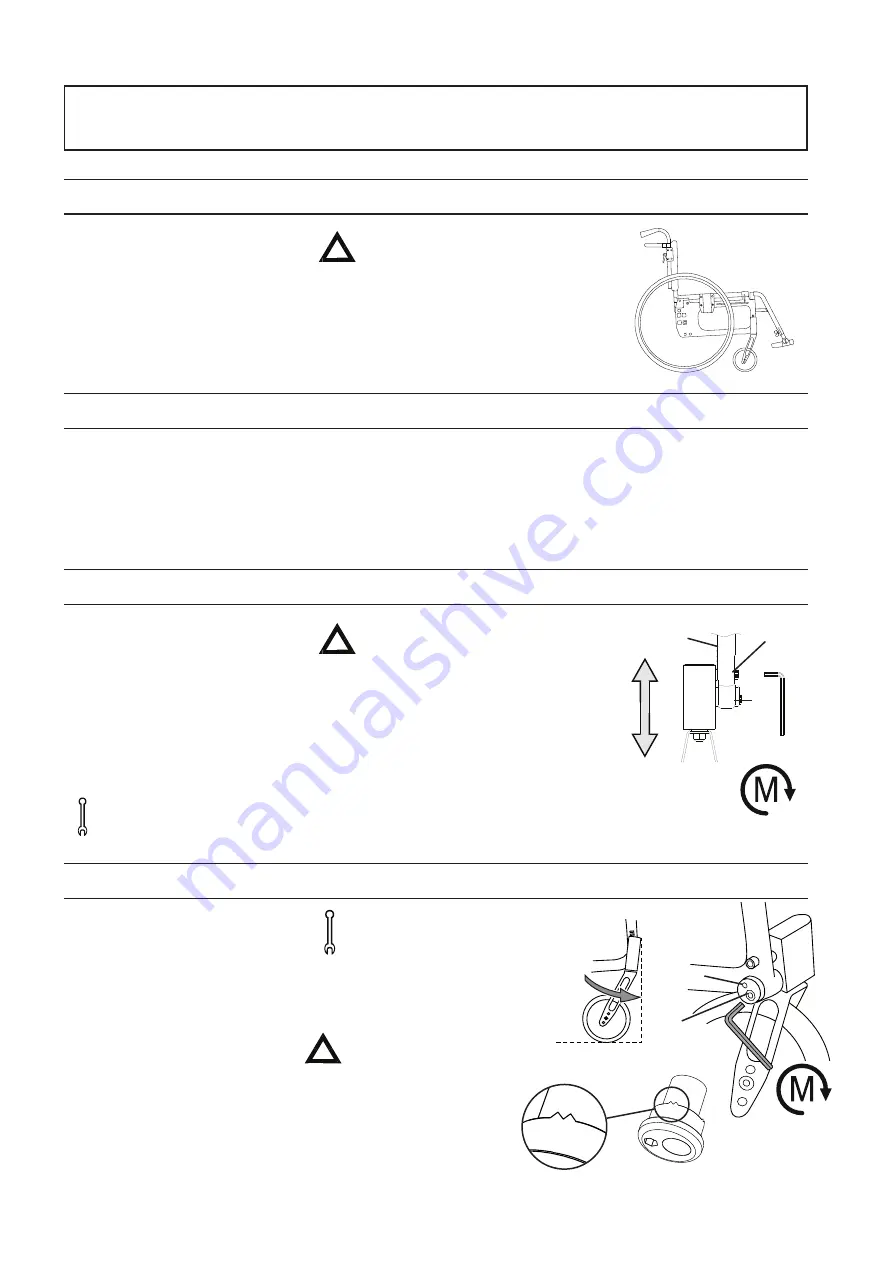
10
The height of the front fork can
be adjusted 4 cm up or down by
loosening the two attachment
screws (A) 1-2 turns and changing the
height of the attachment. See position
marking (B) to obtain equal height
on both sides. Check and adjust the
angle of the attachment and tighten
the screws.
Tools: 6 mm Allen key
(a spirit level may be useful.)
The front seat height is 47 cm and is
dependent upon:
Castor 8"
Front fork short
Front fork attachment’s setting:
Settable height and angle.
7 Settings seat
7:1 Front seat height Twin
Risk of tipping: Always
check the positioning of the
anti-tips.
(!) See also point 14:
“Alternative seat
heights/angles”.
7:1:1 Front seat height Twin low
The front seat height is 42 cm and is
dependent upon:
Castor 6"
Front fork short
Front fork attachment’s setting:
Settable height and angle
(!) Also adjust the angle of
the front fork attachment, see
point 7:3.
7:2 Adjusting the height of the front fork attachment
Risk of tipping: Always check
the position of the anti-tips.
(!) Also adjust the angle of
the front fork attachment, see
point 7:3.
7:3 Setting the angle of the front fork attachment
A
B
C
A
B
C
Tools: 6 mm Allen key
(a spirit level might be useful).
(!)
Keep your eye on something
vertical, e.g. a door frame or
table leg, while setting the angle.
Risk of tipping: Always
check the positioning of
the anti-tips.
The correct angle setting is impor-
tant for the wheelchair’s manoeuvra-
bility.
Unscrew the lower attachment screw
(A) about 2 turns so that the tag (C)
moves freely inside the shaft.
Insert the Allen key in the hole (B)
and turn until the attachment is 90°
to the floor. Always start from a
position that enables the wheel
to move forward in the rotation
(D). (Hold the shaft in place while
the lower attachment screw is
tightened.)
D
20Nm
20Nm







